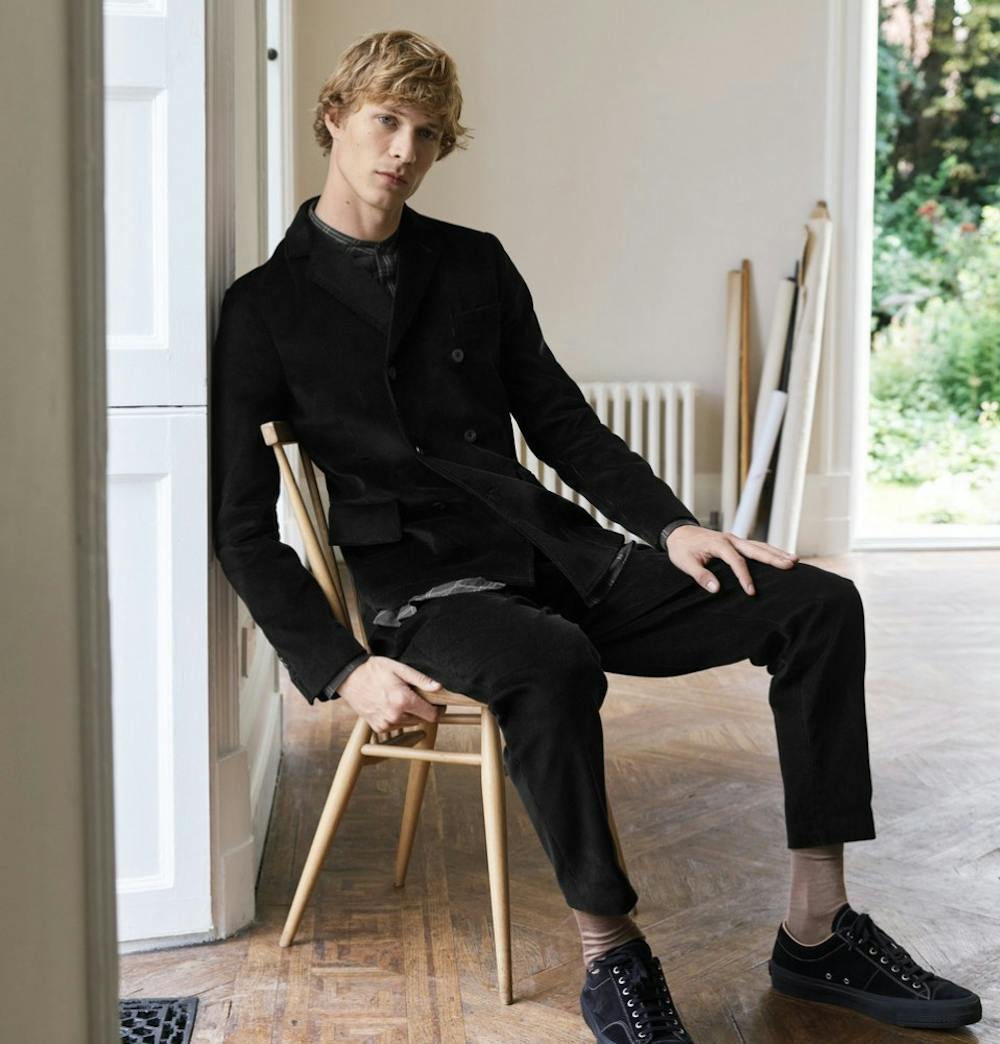Luxury menswear retailer “Mr Porter” launched in 2011 and quickly established itself as the world’s go-to sartorial spot for upscale staples like Acne Studios, Common Projects and A.P.C. as well as edgier, critically acclaimed up-and-comers like Saturdays NYC, Rick Owens and, most recently, Salle Privée.
Being in an industry that casually sells Valentino t-shirts for close to $1,000 and traditionally conjures up notions of high living, Mr Porter always ran the risk of being perceived as off-puttingly snooty. The duality of its highly curated product selection both seeks to counteract this and is emblematic of Mr Porter’s rejection of the stuffy pretentiousness associated with luxury menswear and its subsequent desire to make men’s clothing modern and personable.
Although vestiges still remain of its practice’s gentlemanly skeleton — its signature font is decadently inspired by Sir Francis Bacon’s handwriting and individual letters change in shape depending on the different combination of letters around them — the company somehow places itself as the intersection of timeless and boastfully youthful. With the launch of its Mr P. line, it hope to continue this tradition.
The line is divided into a collection of essential styles — think plain Oxford shirts, dark-colored chinos — augmented by five yearly, limited-edition seasonal capsule collections. The initial offering is set at 53 pieces, with some dropping last Tuesday and the rest dropping this week.
This initial capsule collection was heavily inspired by what American artist R.B. Kitaj coined as the “School of London,” a loose collective of postwar artists who rejected the more heavily circulated minimalist and conceptual avant-garde for the figurative style. The capsule drew inspiration not from the art but the style of dress from the School’s icons — Lucien Freud, Frank Auerbach, Michael Andrews and Francis Bacon. The collection cites their loose and easy style — a negligent mesh of corduroy, unkempt hair and cotton shirts — as the archetype for “the artist’s silhouette.”
Out of this 1960s London collection, several pieces stand out. The two shirts that hark back most to the era are the “Grandad-Collar Checked Cotton Shirt” and the “Grandad-Collar Cotton-Poplin Shirt.” Identifiable by their names, both of the shirts distinctively feature band collars and are derived from grandfather shirts popularized in 1950s Ireland. Although traditionally these shirts come in white or light stripes in a brushed cotton or flannel, Mr P. completely redoes the esoteric classic. Its shirts are made from double-faced Japanese cotton or cotton-poplin. Furthermore, the shirts are the colorway antithesis of their originators.
The “Checked Cotton Shirt” comes in a checkered dark green, black and grey. The “Cotton-Poplin Shirt” comes in navy. Both shirts feature a distinctly relaxed fit and an elongated silhouette, drawn out by a back hem longer than the front. The pieces give a sophisticated and nuanced interpretation on a slouchy classic, still true to heart of the “artist’s silhouette” without the associated slobbish feel. The pieces are overall a fascinating exercise in sprezzatura — a heavily-studied and perfectly manufactured design attempting to replicate a certain carelessness. Other pieces to look out for are the ever-chunky and colorful “Jacquard Wool-Blend Rollneck Sweater” and the unabashedly bold red “Cable-Knit Merino Wool and Cashmere-Blend Sweater.”
Although the Mr P. design staff certainly performed in its first seasonal capsule collection, it is not much of a surprise. Mr Porter’s number of collaborations since its conception provided some of the design chops for creating in-house hits. The company has collaborated across styles from the high-fashion space with Gucci to streetwear with former director at Supreme, Brendon Babenzien’s Noah brand all the way to the European sportswear market with Pas Normal Studios, Café du Cycliste and Iffley Road. The most directly related project and likely a large stylistic influence came from Mr Porter’s massive collaborations with the “Kingsman” movies. For both movies, Mr Porter and director Matthew Vaughn worked together on dozens of bespoke vestiary gems — from suit jackets to sweats.
However, the niche capsule collection pales in comparison to Mr P.’s essential styles line. Mr Porter has been in the business of developing a brand centered around a stylish, detail-oriented, yet understated style for over half a decade now.
This has two major implications. First, on the more technical end, Mr P.’s retail come-up allowed the company to leverage a good deal of internal data to help identify consumer trends and tailor their collection to what customers want. Second, the company’s authentic passion in seeking out and merchandising normcore classics allows the company to specialize in the production of easy-to-wear and smart future classics for an enduring style.
Out of the essential styles line, two pieces are particularly memorable — the “Button-Down Collar Cotton Oxford Shirt” and the “Mélange Cotton-Jersey T-Shirt.” By both their relatively boring names as well as the fact that they are in the year-round staple collection, these pieces stand out not by the novelty of their garment history but the quality of their production.
The Oxford’s traditional role as the building block from which all men’s wardrobes spring means that the Mr P. team put particular attention into its design. Coming in a light blue and a just-short-of-sublime white, the piece is largely unadorned save a chest patch pocket, mother-of-pearl fastenings and gusseted seams. The material is a laundered cotton tailored at a sharp regular cut — as opposed to more baggy conservative pieces. It is these kind of small details and understated pieces that Mr Porter is known for retailing and Mr P. will be known for creating. The t-shirt comes in a thin grey mélange cotton-jersey fabric and is treated with a silicone wash for extra softness. Furthermore, the design was finalized after trialing literally hundreds of similar T-shirts.
Mr P.’s launch reflects exactly what its father brand stands for — a timeless dedication to the classics with the additional flair of interesting innovative pieces to keep things modern and fresh.





